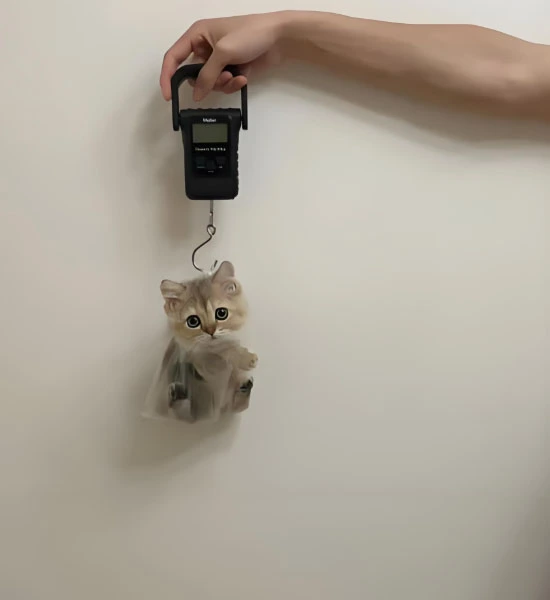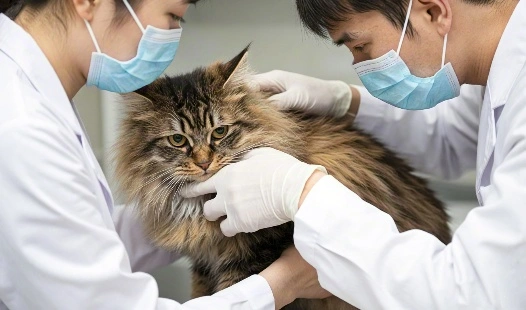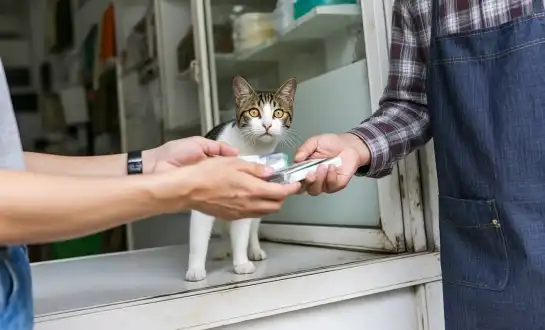Top 7 Signs Your Cat Is Responding to GS-441524 Treatment
Key Hematological and Behavioral Indicators of Positive Response to GS-441524
- Key Hematological and Behavioral Indicators of Positive Response to GS-441524
- Documenting Clinical Improvement Milestones During GS-441524 Therapy
- 7 Signs of Success During GS-441524 Treatment
- The Role of Diagnostic Imaging in Confirming Response to GS-441524
- A Timeline of Expected Positive Signs in Cats Responding to GS-441524
- Conclusion
- FAQ
- Experience the BLOOM TECH Difference in GS-441524 Treatment
- References
Feline infectious peritonitis (FIP) in cats has been a terrible disease for cat owners for a long time. The GS-441524 treatment has given fip cats new hope, though. If you have a cat that is getting treatment, you should know how to tell if the treatment is working well. You can find out about the most important changes and what to expect during treatment in this full guide.



Key Hematological and Behavioral Indicators of Positive Response to GS-441524
GS-441524 treatment may be working if your cat's blood and behavior change in a number of ways. These signs help vets and pet owners know if the treatment is working and if they need to make any changes.

Hematological Improvements
Blood tests are very important for figuring out how your cat will react to GS-441524. Some important blood signs are:
- Less inflammation-related signs
- Getting white blood cell counts back to normal
- Betterment in the characteristics of red blood cells
- Levels of albumin and globulin stay the same
These changes usually happen before you can see any real clinical gains. They are objective proof that the treatment is working.
Behavioral Changes
Behavior changes are just as important as blood tests when it comes to showing that someone is getting better. Some good signs are:
- More hunger and drinking of water
- Better cleaning habits and a renewed interest in play and socializing
- Sleep habits that are more regular
As the medicine works, these changes in behavior often happen at the same time that the cat feels better and gets stronger.

Documenting Clinical Improvement Milestones During GS-441524 Therapy
By keeping an eye on your cat's growth, you can be sure that the GS-441524 treatment is working. Recording important clinical progress milestones helps pet owners stay inspired during treatment and gives vets useful data.

Creating a Treatment Journal
Treating your cat's journey is written down in a therapy notebook. Including these:
- Daily weight measurements
- Measures of body temperature
- Food intake and hunger notes
- Activity and energy levels
- Changing signs or side effects
This detailed log can help you find trends and promptly identify any possible problems.
Regular Veterinary Check-ups
Planning regular trips to the vet is a good way to keep an eye on how much your cat is growing. During these trips, the doctor will:
- Conduct body exams
- Obtain blood samples and study the results.
- Analyze the general progress of treatment
- Changing treatment plans is possible if needed.
Checkups like these let professionals see how your cat is reacting to GS-441524 and also make sure the treatment stays on track.

7 Signs of Success During GS-441524 Treatment
As your cat goes through GS-441524 therapy, there are a few important signs that show the treatment is working. These signs give pet owners hope and drive as they go through the difficult process of FIP treatment.
Weight Gain and Improved Body Condition
Putting on weight is one of the clearest signs that things are getting better. Cats with Fip often lose a lot of weight because of the sickness. You should notice these things as the treatment works:
- Putting on weight steadily over time
- Better muscle tone
- A look of health and fullness
This improvement in your cat's health shows that its body is responding well to the treatment and getting stronger again.
Increased Energy and Activity Levels
The return of your cat's energy is a very good sign that things are getting better. Find these:
- More often to play games
- More exploring of their surroundings
- Taking part in daily home chores
Your cat's increased energy is a clear sign that it is feeling better and that the medicine is working.
Resolution of Clinical Symptoms
You should notice a slow improvement in your symptoms as GS-441524 fights the FIP virus. Some important changes are:
- Fewer fevers
- Less stomach fluid (in cases of wet FIP)
- Better ability to breathe
- Getting rid of any eye or nerve signs that were there
The fact that these symptoms got better shows that the treatment is working to get to the root cause of FIP.
Normalization of Blood Parameters
Regular blood tests will show big changes in a number of areas. Find these:
- Keeping the amounts of hematocrit stable
- Getting white blood cell counts back to normal
- Markers of better liver and kidney function
These changes in your cat's blood show that he or she is getting better and that the medicine worked.
Improved Appetite and Eating Habits
When the body responds well to GS-441524 it usually shows up as a big increase in hunger. You might see:
- Food interest has grown
- More asks for meals
- Being able to finish meals
Your cat's recovered interest in eating is very important for its health and healing.
Better Coat Condition and Grooming Behavior
Your cat's coat and cleaning habits will probably change for the better as their health gets better:
- Fur that looks better and shiner
- Not as much dropping
- Self-grooming habits got worse
These changes show that your cat is healthier and more comfortable generally.
Return of Normal Feline Behaviors
The return of normal cat habits may be one of the most encouraging signs. Find these:
- More time spent socializing with family members
- Return to favorite hobbies (like watching TV out the window or playing with toys)
- Normal ways of sleeping
It looks like your cat is not only living but also thriving during treatment based on these changes in behavior.
The Role of Diagnostic Imaging in Confirming Response to GS-441524
Diagnostic imaging is a very important part of making sure that your cat responds to GS-441524 treatment, along with blood tests and clinical notes. These imaging methods give you useful information about the changes happening inside your cat as it heals from FIP.
Ultrasound Examinations
Ultrasound is a great way to keep an eye on cats with wet FIP. When ultrasounds are done regularly, they can show:
- Getting rid of abdomen or pleural effusion
- Betterment in the look and size of organs
- Resolution of swollen lymph nodes
These visual signs of change go along with other medical signs and blood test results.
Radiographic Studies
Tracking the growth of cats with thoracic involvement can be helped by X-rays. A x-ray might show:
- Getting rid of pleural effusion
- Better vision in the lung field
- Getting the heart and lungs' shapes back to normal
With these imaging tests, we have objective proof that the treatment works to fix the breathing problems caused by FIP.
|
|
|
A Timeline of Expected Positive Signs in Cats Responding to GS-441524
Knowing how long it usually takes to get better can help you set realistic goals and keep you going during treatment. Even though every cat's trip is different, the timeline below shows how the good signs usually appear.

Early Stage (Weeks 1-4)
In the first few weeks of treatment, you might notice:
- Stabilization of fever and less tiredness
- A little more food in the stomach
- Less obvious clinical signs, like less abdominal distension in wet FIP cases
These early signs show that the treatment is starting to work and give people hope that things will keep getting better.
Mid-Stage (Weeks 5-8)
More noticeable benefits should become clear as treatment goes on:
- Weight growth that can be seen
- Higher amounts of energy and activity
- Setting blood values back to normal
- A big drop in the severity of symptoms
This time is often a turning point in the cat's recovery, with many owners reporting that their pet's general health gets a lot better.


Late Stage (Weeks 9-12 and beyond)
In the last few weeks of the usual treatment plan and after, you should do the following:
- Get back to normal or almost normal amounts of activity and behavior
- Full recovery from clinical signs
- Weight gain that lasts and better body shape
- Blood test readings that are stable and in the normal range
At this point, the treatment's effects are at their peak, and many cats with FIP go into remission.
Conclusion
The GS-441524 treatment needs to be able to tell the difference between people who own cats and people who work with cats. There are many ways to fight FIP with hope, from changing the way people act to changing the way their blood is shaped. To help your cat get better, keep in touch with your medical team and pay close attention to these signs. Don't forget that the trip is for the best because it will help you get better.
FAQ
Q1: How long does it typically take to see improvements with GS-441524 treatment?
A1: While individual responses vary, many cat owners report seeing initial improvements within the first 1-2 weeks of treatment. More significant changes often become apparent around 4-6 weeks into the therapy. However, it's important to complete the full recommended treatment course, typically 12 weeks, even if early improvements are observed.
Q2: Are there any side effects of GS-441524 treatment that I should be aware of?
A2: While GS-441524 is generally well-tolerated, some cats may experience mild side effects such as temporary loss of appetite, mild gastrointestinal upset, or injection site reactions. These effects are usually transient and should be reported to your veterinarian. Severe side effects are rare but should be immediately addressed if they occur.
Q3: Can a cat relapse after successful GS-441524 treatment?
A3: While relapses are possible, they are relatively uncommon when the full treatment protocol is followed correctly. Most cats that complete the recommended course of GS-441524 treatment achieve long-term remission. However, it's crucial to monitor your cat closely even after treatment and report any recurrence of symptoms to your veterinarian promptly.
Experience the BLOOM TECH Difference in GS-441524 Treatment
When it comes to treating FIP, we at BLOOM TECH know how important high-quality GS-441524 is. Our dedication to manufacturing excellence makes sure that vets and cat owners can get high-quality GS-441524 powder, especially for a fip cat. We promise a product that meets the highest standards of cleanliness and effectiveness thanks to our cutting-edge facilities and strict quality control procedures.
Don't guess about your cat's health. If you need a trusted pharmaceutical-grade GS-441524, choose BLOOM TECH, a reliable GS-441524 manufacturer. Our focused team is ready to help you through the whole process of treating your cat. Please email us at Sales@bloomtechz.com with any questions or to find out more about the GS-441524 services we offer. We can fight FIP better if we all work together.
References
1. Pedersen, N.C., et al. (2019). Efficacy and safety of the nucleoside analog GS-441524 for treatment of cats with naturally occurring feline infectious peritonitis. Journal of Feline Medicine and Surgery, 21(4), 271-281.
2. Murphy, B.G., et al. (2020). Treatment of cats with feline infectious peritonitis with GS-441524. Journal of Veterinary Internal Medicine, 34(1), 202-212.
3. Addie, D.D., et al. (2020). Feline infectious peritonitis. ABCD guidelines on prevention and management. Journal of Feline Medicine and Surgery, 22(11), 1047-1068.
4. Dickinson, P.J., et al. (2020). Antiviral treatment of cats with naturally occurring feline infectious peritonitis using the adenosine nucleoside analog GS-441524. Journal of Veterinary Internal Medicine, 34(5), 1587-1593.
5. Krentz, D., et al. (2021). Comparison of the pharmacokinetics of subcutaneous and oral GS-441524 in cats. Journal of Veterinary Pharmacology and Therapeutics, 44(3), 408-414.
6. Weiss, R.C., et al. (2020). Efficacy of GS-441524 against feline infectious peritonitis (FIP) virus in tissue culture and experimental cat infection studies. Antiviral Research, 182, 104907.

Sylvia
3 years of experience in chemical articles; Bachelor's degree; Organic Chemistry major; R&D-4 Dept; Technology support; R&D engineer
Anticipating your Business & Technology support inquiry
Please send us the products that interest you, and we will provide you with one-on-one service
Recommended Blog
_副本_1757905577235.webp)
The Molecular Mechanism of GS-441524: How It Fights Coronavirus

The best time of day to give GS-441524 pills for better absorption
_副本_1760668477594.webp)
How Effective Is the FIP Vaccine? Insights from Recent Studies











